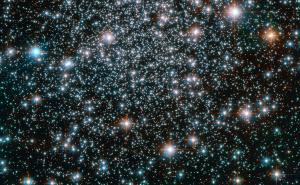During ITER's full deuterium-tritium fusion power operation, three heating systems will be employed: electron cyclotron resonance heating (ECRH), capable of injecting up to 20 megawatts; ion cyclotron radiofrequency heating (ICRF), with a similar 20 megawatt maximum heating capability; and the neutral beam (NB) heating system, capable of injecting a maximum of 33 megawatts into the plasma. Thus, 73 megawatts of plasma heating will be available to ITER operators, well above the 50 megawatts required.
Why stop at a Q of 10? Why not design ITER for a Q of 30, or 50? The answer is clear: expense. For tokamaks, size and magnetic field strength matter. In simple terms, increasing Q would require an increase in the major radius or in the magnetic field strength. Either approach would have increased the cost of the device unnecessarily, whereas the achievement of Q ≥ 10 is sufficient to allow the primary scientific and technology goals of the project to be satisfied.
And a related question: Why not design ITER to produce electricity? This would also have required an increase in cost with no great benefit to the goals of the project. ITER is an experimental device designed to operate with a wide range of plasma conditions in order to develop a deeper understanding of the physics of burning plasmas, and to allow the exploration of optimum parameters for plasma operation in a power plant. The addition of the systems required to convert fusion power to high temperature steam to drive an electricity generator would not have been cost-effective, since the pattern of experimental operation of a tokamak such as ITER will allow for very limited generation of electricity.
Commercial fusion plants will be designed based on a power balance that accounts for the entire facility: the electricity output, sent to the industrial grid, compared to the electricity consumed by the facility itself—not only in tokamak heating, but also in secondary systems such as the electricity used to power the electromagnets, cool the cryogenics plant, and run diagnostics and control systems.
Not so with ITER. The ITER cryogenics plant and magnet conversion facilities are designed to operate efficiently, cooling the superconductor magnets to -269 °C and powering them to generate the necessary 15 megaamperes of plasma current. But the electricity consumed in these systems has no bearing on the thermal power balance of the plasma itself, and it is the burning (or largely self-heating) plasma that is of interest to ITER's scientists. With the physics of magnetically confined burning plasmas accessible for the first time in history, ITER's legacy will burn brightly in the fusion electricity plants of the years to come.
For ITER, it's all about the Q.


